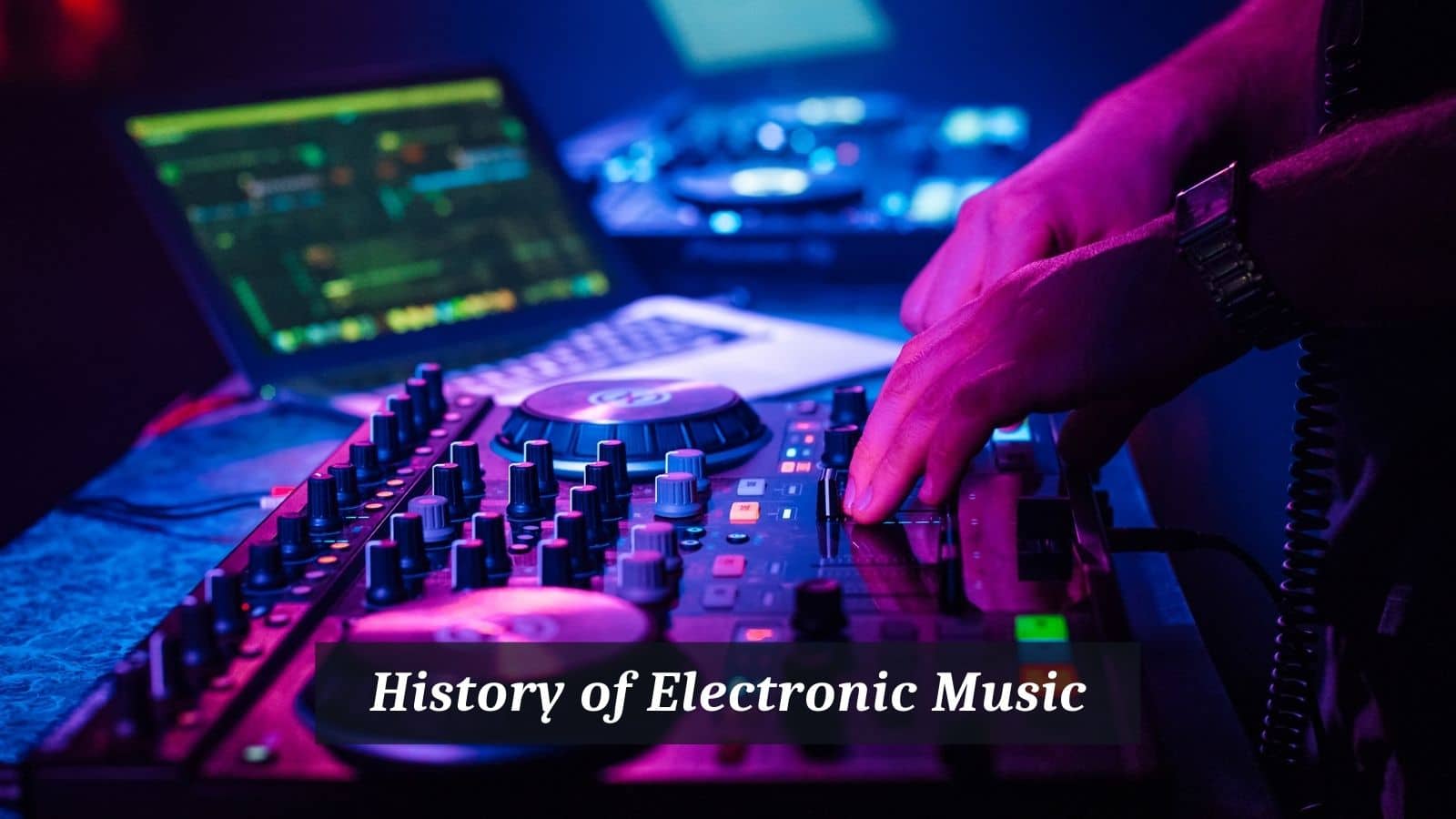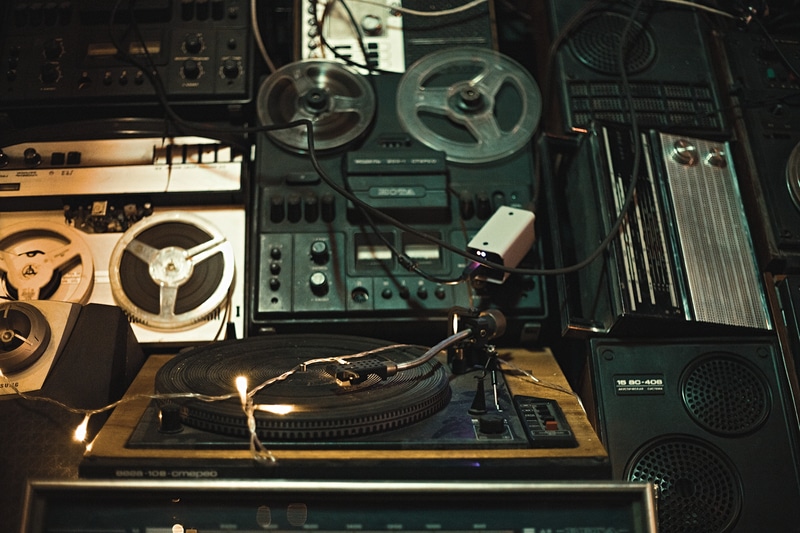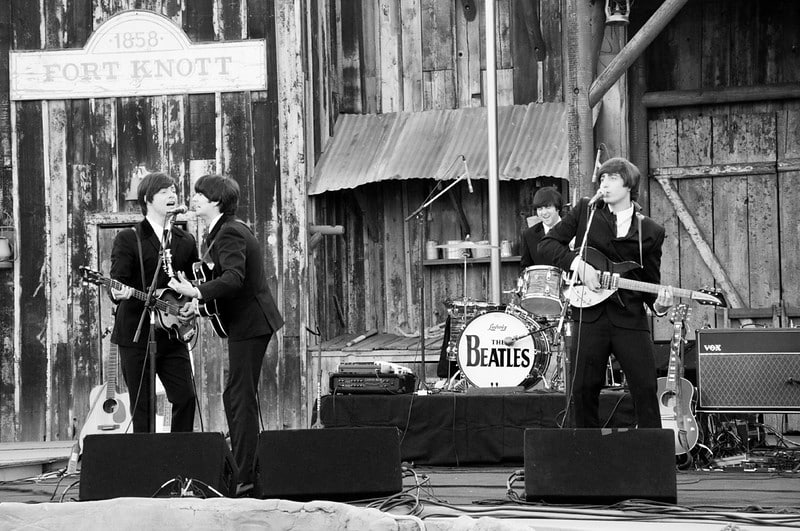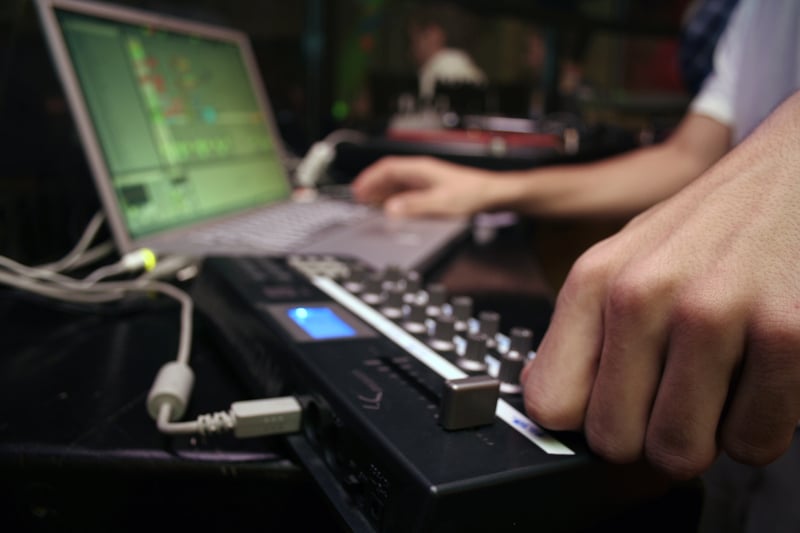
There is a burning temptation to lapse into thinking that electronic music is embodied only in the genres of EDM. The foundations of much of that technology began a long time before.
History of Electronic Music
Experiments in using electronics to create sound stretch as far back as the mid-19th century. At this stage in time we discover the Electromechanic Piano, as invented by Matthaüs Hipp that used magnets to create sound.
There was also reportedly the Telharmonium developed by Thaddeus Cahill that could synthesise sound and then send it across the telephone network.
As the twentieth century dawned further advances came in the creation of music by electronic means. Leon Theremin, in Russia, developed an electronic instrument (initially called the etherophone), that became known as the Theremin.
It’s a magical device that on first seeing, and hearing, seems to conjure sound from nowhere. Electrical oscillations are created between two antennas.
These are then played by the movement of the performer’s hands. To my ears, the sound is a cross between an operatic soprano, a violin and a musical saw.
Around 1930, an electronic instrument imposingly called the trautonium was created by Frederich Trautwein. In many ways, this was the prelude to the synthesisers we know and love today with the difference being wires were used to play it rather than keys.
The trautonium produces its sounds employing oscillating neon tubes (later transistors). These generate an electronic pulse that is then converted into audible sound via a loudspeaker.
German composer Paul Hindemith became fascinated by the possibilities of this instrument and composed a Concerto for Trautonium with String Quartet alongside several trios for trautonium.
In addition to these fantastic instrumental creations was the development of magnetic audio tape. This was a major leap forward in respect of recording technology as well as a significant step in the advancement of electronic music.
By the early 1940s electroacoustic tape music was being composed. The use of tape meant that you could record sound, cut it up, slow it down and speed it up.
Musique Concrete, heralding from Paris in the late 1940s exemplified exactly this. Exponent Pierre Schaeffer (1910-1995), was one of the first composers to explore natural sounds using tape.
His premise was that the everyday sounds we experience are just as fascinating and musically valid as any other. Schaeffer led the avant-garde charge in this field creating audio landscapes by creatively applying these new techniques to his recordings.
This offered fresh, exciting opportunities for the composers of the 1950s and onwards. Here is a link to his piece titled Étude aux Chemins de Fer.
Another instrument, still very much in use today, that stemmed from this abundantly creative time was the Hammond Organ. First manufactured in 1935, Laurens Hammond, engineer, inventor and lover of clocks, produced one of the most iconic-sounding instruments ever made.
The Hammond organ is a complicated piece of machinery. It generates tones from rotating metal tonewheels located near electromagnetic pick-ups.
This signal passes through an amplifier, then into a Leslie speaker cabinet. If you want to get up close to the Hammond Organ, follow this link (https://youtu.be/7Qqmr6IiFLE)
In the early 1950s in Cologne, Germany, NWDR Radio Studios opened. Due largely to the innovation of Werner Mayer-Eppler, Robert Beyer and Herbert Eimert this became one of the most renowned studios in the world.
It quickly became a favourite of German avant-garde composer Karlheinz Stockhausen. What differentiated the German Elektronische Klangerzeugung from the French Musique Concrete was that their approach was to create sound from electronic synthesis not from natural, acoustic sound sources.
Both Stockhausen and French composer Varese wrote key works during the 1950s that drove the interest of classical composers going forward.
Both composers combined traditional instruments with electronically created sound, usually recorded to tape. Listen here to Varese’s Déserts
and Stockhausen’s Hynmen
Other composers took on the challenges of the electronic world. John Cage, never shy of trying a new concept, formed The Music for Magnetic Tape Project with other members of the New York School.
From as early as 1939 Cage was experimenting with electronic music. His Imaginary Landscapes No.1 made clever use of turntables.
Cage’s William’s Mix is a demonstration of what can be done with an eight-track tape machine, and it was the advent of multi-track recording that enabled a quantum leap forward in electronic music.
In 1958 the universities of Columbia and Princeton constructed the RCA (Radio Corporation of America), Mark II Sound Synthesiser (https://ethw.org/RCA_Mark_I_and_Mark_II_Synthesizers).
This distinguished itself from its predecessors as it was programmable (the Mark I was 1955). It was a colossal machine, using twenty-four-tone oscillators that presented composers with a large range of sounds that could be sequenced.
Naturally, this development attracted the ear of contemporary composers like Milton Babbitt, Halim El-Dabh and Mario Davidovsky who made great creative use of the invention.
These up-to-the-minute sonorities filtered into the world of film with the first electronic film score composed for the Forbidden planet by Louis and Bebe Barron (1956). (https://youtu.be/0yuh_1_tV4w)
By the 1960s electronic music was in its heyday. Electronic Music Studios were springing up across the world from Jerusalem to Tokyo, each delving deeper into this brave new musical world.
The 1960s has been titled as the decade of expansion, as electronic music fed into popular music as well as the avant-garde. Bands like the Beatles made extensive use of multi-track recording techniques.
With the pioneering ingenuity of Brian Epstein, that all began after hearing the group in the Cavern club in 1961.
The synthesiser had established itself by the 1960s. Even though it wasn’t yet a featured instrument in many bands, composers were developing works that increasingly involved these new sounds.
Robert Moog created one of the most sorts after, admired and played synthesisers. Moog brought the first Moog synth to the public in 1964.
It was called a modular synth as it was each section of the instrument had a different function, all networked together by a patch bay mechanism. It looked like an early telephone switchboard with a keyboard attached. New models followed in 1965 right through to 1981.
Moog was the first commercial synthesiser. Where we hear particularly good use of Moog synths is in bands like Genesis, Pink Floyd and Emerson, Lake and Palmer.
These bands influenced many others including Tangerine Dream and the infamous German band Kraftwerk. These musicians were part of what became termed krautrock, which centred their sound on the synthesiser.
By 1975 the Japanese company Yamaha were developing their first digital FM synthesiser (frequency modulation synth), which used algorithms created by John Chowning.
In 1980 Yamaha released the GS-1, followed in 1983 by the DX7; a stand-alone synth that became the backbone of many an 80s band. Korg brought their Polly-800 to the market in 1983. It offered eight-voice polyphony and was fully programmable.
The Casio CZ-101 undercut the pricy Korg and offered a polyphonic synth for $500 and in 1987 Roland produced their digital, programmable, subtractive synth, the D-50 which had the option to add further units for more complex sound manipulation.
The 1980s were electronic heaven and synth-pop. Synths were everywhere. Drum machines like the Roland TR-808 began to make a huge impact on the way music was changing.
Programmable drum machines took particular hold in the music of the Detroit DJs who created what became the techno scene. This in turn paved the way for many electronic genres including EDM, House, Trip Hop, Hip Hop, Trap, Drum & Bass and so on.
MIDI (Musical Instrument Digital Interface), became a standard in music. It offered a link between computers, keyboards and software giving almost limitless options for control of sound in the studio or live.
Computer technology was racing ahead too as the idea of sampling. The Fairlight CMI (1979), was one of the first digital audio workstations (DAWs)
It went through many different versions but each one took the Fairlight a step closer to being able to be a truly usable piece of electronic kit. Peter Gabriel made highly creative use of the Fairlight on his third studio album.
Dance music dominates the electronic music scene in the 1990s and into the 2000s. As the cost of computers, synths, software and recording devices became ever cheaper, the bedroom producer arrived on the music scene.
Software like Sibelius, Cubase, Pro Tools and Logic made the creation of industry-quality music possible for thousands of musicians. Bands such as The Chemical Brothers, Underworld Orbital, Aphex Twin and artists like Björk, Lamb, and Massive Attack carved the way forward in the world of electronic music.
Today, the world of electronic music spreads across numerous genres from EDM to film and contemporary classical.
It has become integrated into the curriculum for students across the world with increasingly greater numbers of universities offering courses in electronic music, production, sound design and many more. It is a vibrant and exciting time to be living in and I wonder what the next fifty years will bring.



